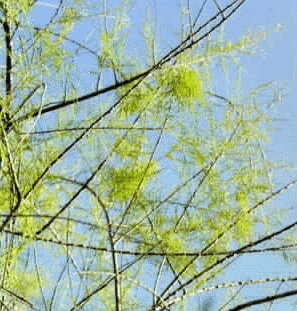
Salt Cedar
Tamarix ramosissima

Salt Cedar
Tamarix ramosissima
Description:
The Salt Cedar plant, which is another name for the Tamarisk plant, grows more than 20 feet in height. Salt Cedar plants consume large quantities of water-- 200 gallons a day according to one estimate. The plant is a flowering tree or large shrub. It has white, cream, pink, or purple flowers. It has high resistance to heat or cold as well as it has a high salt tolerance-- all qualities that make it a successful weed. The plant was originally brought to the southern California region from the Middle East and Northern Africa, in the late 1800s. Originally used as a windbreak and a control for erosion, also used widely in the desert for a widespread greenness and shade.
Why Salt Cedar is undesirable:
Salt Cedar alters the natural environment in which it lives. It puts down deeper roots than any other shrub or tree, letting it consume more than twice the amount of water than any other plant in its area ultimately wiping out all of the other existing plants.
The frequent result of the lack of sustaining water is the disappearance of wetland habitats and animals which live in them, such as turtles, salamanders, the elf owl and a declining bird species called the Yuma clapper. In addition, the plant's insatiable thirst also dries up desert water holes frequented by deer and bighorn sheep. In return, the Salt Cedar provides habitat and food for only limited species like honeybees, hummingbirds and doves. Also the Salt Cedar plant stores salt at a higher concentration than the ocean and secretes it so that the surrounding soil becomes saltier and saltier and less hospitable for the native plants that can not tolerate that salt concentration. Also the Salt Cedar burns rapidly and regenerates even more quickly.